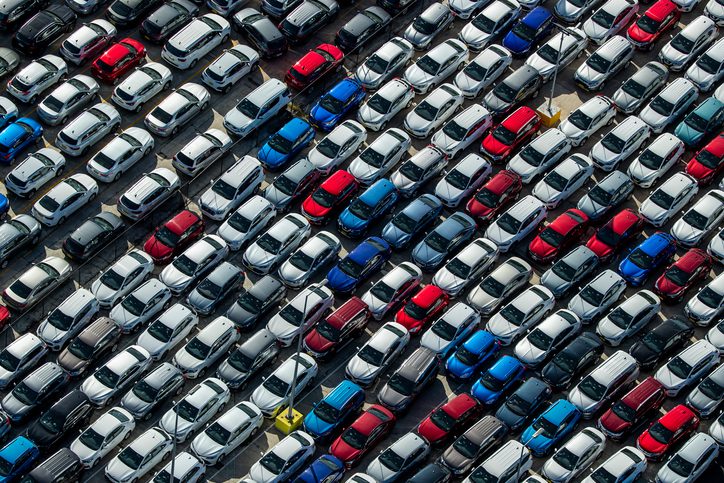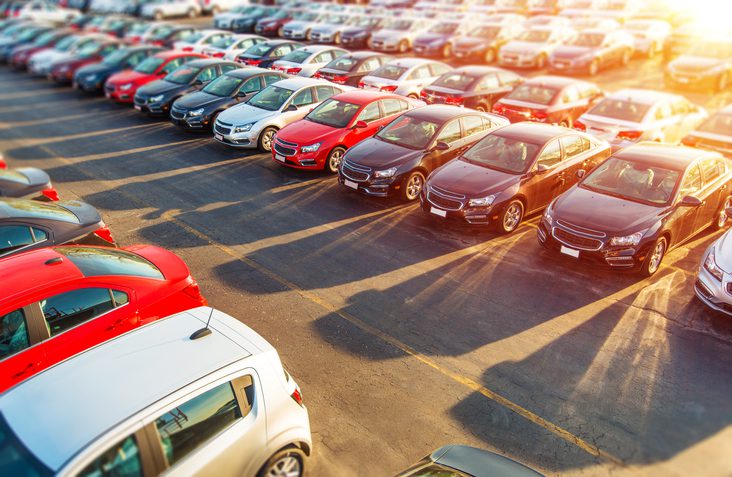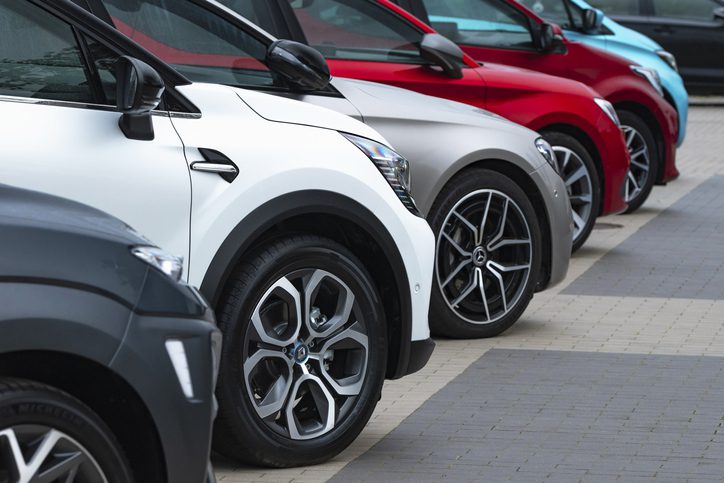Maybe you’ve never driven around looking for a parking space in a busy downtown and wondered why sometimes the lines are painted straight and other times they go at an angle.
If you haven’t though, I bet you are now.
Like most things in design, architecture, and city planning, there’s a logic that goes into painting those little white lines – but what is it?

Image Credit: iStock
It comes down to a bunch of decisions that have to consider spacing, number of spots, efficiency, and flow of traffic. It’s a real science, is what we’re saying!
The angle of spaces in any given lot can affect not only the number of spots available, but also how quickly the spots are able to turn over as people pull into and out of them.
Which one is best? Should traffic be one-way or two-way? What’s the correct number of shopping cart corrals?
I can tell you this – there is way more math involved than I would be able to handle.

Image Credit: iStock
For a long time, the standard option was the 90-degree model, which means you have to turn your car a full 90 degrees into the space. It’s very efficient and is the best way to include a maximum amount of spaces on any given lot.
They might be simple and common, but they’re not always the best option.
Sometimes a 60-degree model works better, and is considered a bit of a compromise – just a slight angle, no big deal. They do still require a decent amount of turning and two lanes of traffic, but they do save on space.

Image Credit: iStock
Mathematicians and designers agree that a 45-degree model is the easiest, though it, too, has drawbacks. The spaces aren’t as efficiently placed, for one, but they do require a single lane of traffic, which is both the safest and most efficient way to do business.
Entry and exist is super simple, with only a small turn and a bit of maneuvering space required.

Image Credit: iStock
Safer and more efficient – what’s not to love?
That said, the one way traffic could slow things down too much in a giant space, like a shopping mall or superstore, and the two-way lanes might be worth the slightly increased risk of a fender bender.
In the future, most engineers believe parking will rely more on robotics. The parking garages themselves will be mechanized, with cars being dropped off at the entrance and moved into their spaces using hydraulic lifts.

Image Credit: iStock
Sure, it will be expensive, but you’ll be able to cram more cars into each and every lot, plus emissions and carbon footprints should be reduced, as well.
What kind of parking lot do you prefer? After reading this article, I honestly think I have a preference, which is a bit weird in itself.
Let’s nerd out together in the comments!






